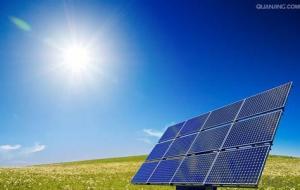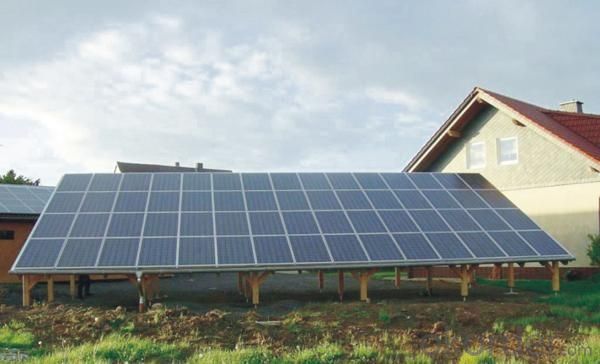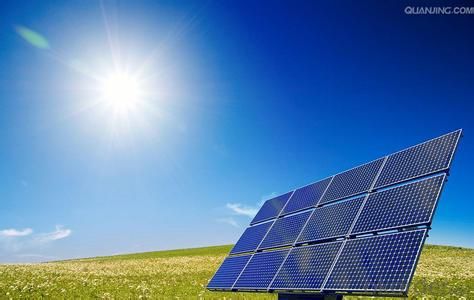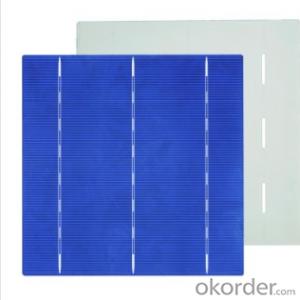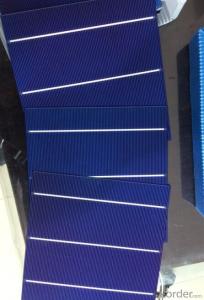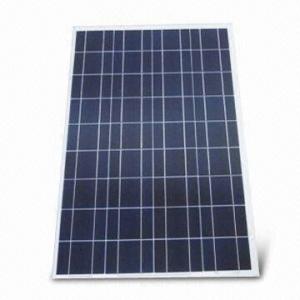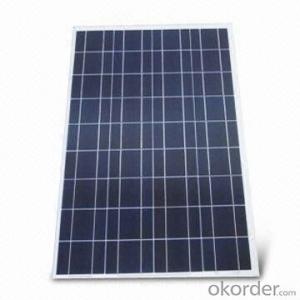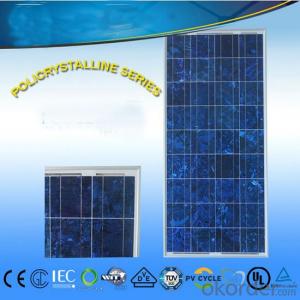Buy High Quality Polycrystalline Solar Panel 300W/36V, ISO/CE Certificated Solar Cells Online
- Loading Port:
- China Main Port
- Payment Terms:
- TT OR LC
- Min Order Qty:
- -
- Supply Capability:
- 10000000000000 watt/month
OKorder Service Pledge
OKorder Financial Service
You Might Also Like
Quick Details
| Place of Origin: | Guangdong China (Mainland) | Brand Name: | CAP | Model Number: | 50w100w150w200w250w300w |
| Material: | Monocrystalline Silicon | Size: | 1385*1035*75mm | Number of Cells: | 72pcs |
| Max. Power: | 300w | type: | solar panel | color: | blue&black |
| warranty: | 5 years |
Packaging & Delivery
| Packaging Detail: | standard export package for solar panel |
| Delivery Detail: | 7-15 days for solar panel |
Specifications
solar panel
High Efficiency
25 years Warranty
High-transmissivity low-iron tempered glass
Solar Panel
50w100w150w200w250w300w
Characteristics
1,High and stable conversion efficienly based on over 4 years professional experience
2 ,High reliability with guaranteed +/-10% output power tolerance
3,Proven materials,tempered front glass,and a sturdy anodized aluminum frame allow modules to operate reliably in multiple mountily configurations
4,Combination of high efficicncy and attractive appearance
Quality and Safety
1,25 year 80%,10 year 90% power warranty 3 year power warranty
2,ISO9001:2000 (Quality Management system) certified factory
3,Product Quality warranty & products Liability Insurance to guarantee and user' benefits
4,Certifications TUV Intercert, CE Temperature Coefficients
| Module Type | 100w | 150w | 200w | 250w | 300w |
| Maximum Power at ST(Pmax)W | 100wp | 150wp | 200wp | 250wp | 300wp |
| Maximum Power Voltage(Vmp)V | 36/18 | 36/18 | 36/18 | 30.8v | 36/18 |
| Maximum Power Current(Imp)A | 2.77/5.55 | 4.16/8.33 | 5.55/11.1 | 8.11A | 8.33/16.66 |
| Open Circuit Voltage(Voc)V | 39.5/19.05 | 39.3/19.4 | 39.6/19.5 | 36.2V | 39.6/19.8 |
| Short Circuit Current(Isc)A | 3.04/6.09 | 4.58/9.16 | 6.1/12.2 | 8.7A | 9.16/18.33 |
| Cell Efficiency(%) | 18.60% | 18.10% | 18.60% | 17.80% | 18.10% |
| Module Efficiency(%) | 17.70% | 17.20% | 17.70% | 17.10% | 17.20% |
| Operating Temperature°C | -40°C to +85°C | -40°C to +85°C | -40°C to +85°C | -40°C to +85°C | -40°C to +85°C |
| Maximum system voltage | 1000V(IEC)DC | 1000V(IEC)DC | 1000V(IEC)DC | 1000V(IEC)DC | 1000V(IEC)DC |
| Power tolerance | -0.03 | -0.03 | -0.03 | -0.03 | -0.03 |
| Temperature coefficients of Pmax | -0.45%/°C | -0.45%/°C | -0.45%/°C | -0.45%/°C | -0.45%/°C |
| Temperature coefficients of Voc | -0.27%/°C | -0.27%/°C | -0.27%/°C | -0.27%/°C | -0.27%/°C |
| Temperature coefficients of Isc | 0.05%/°C | 0.05%/°C | 0.05%/°C | 0.05%/°C | 0.05%/°C |
| Weight(kg) | 8 | 11 | 14 | 20 | 25.5 |
| Number of cell(pcs) | 4*9 | 4*9 | 6*10 | 6*12 | 6*12 |
| Dimensions(mm) | 1194*534*35/30 | 1580*808*50/35 | 1471*670*40/35 | 1640*992*50 | 2000*1050*50 |
- Q: What are the advantages of using solar cells?
- The advantages of using solar cells include renewable and sustainable energy generation, reduced greenhouse gas emissions, lower energy costs in the long run, and increased energy independence. Solar cells also require minimal maintenance and have a long lifespan, making them a reliable and durable energy solution.
- Q: How do solar cells perform in areas with frequent thunderstorms?
- Solar cells can still operate effectively in areas with frequent thunderstorms. While thunderstorms can temporarily decrease solar cell performance due to reduced sunlight exposure, advancements in solar technology have made solar cells more durable and resistant to extreme weather conditions. Additionally, solar cells can still generate electricity from diffused sunlight during cloudy or stormy days. Overall, solar cells can still be a viable and sustainable energy option in areas with frequent thunderstorms.
- Q: 24V 200W solar cells can charge 12V battery?
- 24-volt battery pack to 12-volt battery charge is possible, because the battery block resistance is large, allowing the output short-circuit.
- Q: How do solar cells perform in urban environments?
- Solar cells can perform well in urban environments, although their efficiency can be affected by factors such as shading from buildings and pollution. However, advancements in technology have allowed for the development of solar cells that are more resilient to these challenges, making them a viable and sustainable energy option in urban areas.
- Q: What kind of products can be considered as the solar cell products?
- Solar cell product, as simple as it is, is the products which is made of solar cell, or generated by the power converting from solar cells.
- Q: Can solar cells be used on mobile devices?
- Yes, solar cells can be used on mobile devices. There are already various portable solar chargers available in the market that can be connected to mobile devices to generate and store energy from sunlight. Additionally, there are also some mobile devices that come with built-in solar panels to directly convert solar energy into power for charging.
- Q: Can solar cells be used in remote sensing devices?
- Yes, solar cells can be used in remote sensing devices. Solar cells are capable of converting sunlight into electricity, providing a sustainable and reliable power source for remote sensing devices. This allows them to operate independently and for extended periods of time, making solar cells an ideal energy solution for remote sensing applications.
- Q: Can solar cells store energy for later use?
- No, solar cells cannot store energy for later use. They convert sunlight directly into electricity in real-time and do not have the capability to store the generated energy.
- Q: What are the short-circuit currents of solar cells affected by the factors?
- The size of the suede, the uniformity, the depth of diffusion, the film thickness of the PECVD, the printing condition of the screen and the sintering conditions,
- Q: How do solar cells handle electromagnetic interference?
- Solar cells are typically designed to be resistant to electromagnetic interference by incorporating shielding and filtering techniques. These measures help to minimize the impact of electromagnetic waves from external sources, ensuring that the solar cells continue to operate efficiently and produce electricity without interference.
Send your message to us
Buy High Quality Polycrystalline Solar Panel 300W/36V, ISO/CE Certificated Solar Cells Online
- Loading Port:
- China Main Port
- Payment Terms:
- TT OR LC
- Min Order Qty:
- -
- Supply Capability:
- 10000000000000 watt/month
OKorder Service Pledge
OKorder Financial Service
Similar products
Hot products
Hot Searches
Related keywords


